|
|
By Sandy, on April 8th, 2009
Besides sunlight, nothing can be more valuable to an indoor gardener than her garden journal. A record of your plants’ details, such as the purchasing dates of your plants, the dates when your plants bloom or mature, the sizes, the colors, and all other information you have found about your plants, is an essential resource of your gardening experience. Your gardening journal will help you answer questions about what your plant may need if it starts looking poorly, and will remind you of what works and what doesn’t.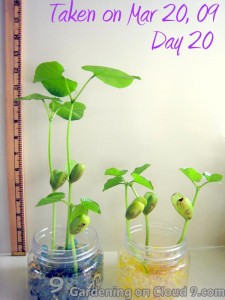
Take Photos
A picture is worth a thousand words. Instead of describing how distorted the shape of my echeveria has become, or how well (or bad) my African violet is growing, I record all these simply by taking photos of my plants every once a while. Continue reading Keeping a Garden Journal
By Sandy, on April 2nd, 2009
Compare to gardeners of the United States, gardeners in Canada seem to have an easier time in importing seeds from other countries. While Canada has its import regulations of seed to control and verify that seeds imported into Canada are free of prohibited noxious weeds and meet the minimum standards for purity and germination for the crop kind in question, these seed import regulations are relatively loose when comparing with those of the United States.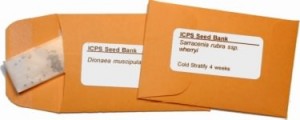
For shipping seeds into Canada, the importer must fill out the Import Declaration Form (CFIA/ACIA Form 4560), Continue reading Shipping Seeds to Canada
By Sandy, on March 31st, 2009
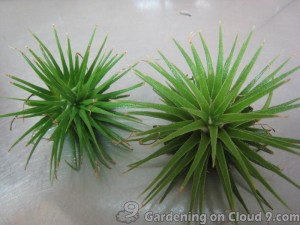 With its epiphytic characteristics, Tillandsia has earned its nickname, air plant. Instead of the roots, the plants absorb water directly through their leaves, and use their roots as wire-like anchors, hanging on trees and rocks without soil. With its epiphytic characteristics, Tillandsia has earned its nickname, air plant. Instead of the roots, the plants absorb water directly through their leaves, and use their roots as wire-like anchors, hanging on trees and rocks without soil.
Underwatering and Overwatering Your Tillandsia
Probably due to Tillandsia’s common name – Air Plant, many of us tend to think that these plants need very little or no water, as living on air. Well… of course, this is not true. Just like all other plants, Tillandsias need water. Continue reading Watering Tillandsia (a.k.a. Air Plant)
By Sandy, on March 29th, 2009
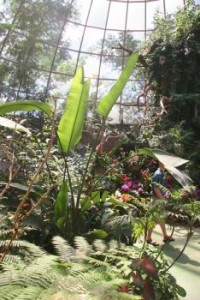 Here is a list of the most common houseplants that are suitable for indoor gardening. The houseplants in this list are mostly easy-to-grow, low maintenance, hardy plants that fit the busy lifestyle of us, the city gardeners. Here is a list of the most common houseplants that are suitable for indoor gardening. The houseplants in this list are mostly easy-to-grow, low maintenance, hardy plants that fit the busy lifestyle of us, the city gardeners.
Continue reading Suitable Plants for Indoor Gardening
By Sandy, on March 27th, 2009
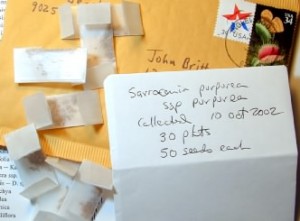 Since every country has its own set of import restrictions of seeds, swapping seeds around the world can be confusing and problematic. Here is a quick guide for swapping seeds that always stays true, no matter which country the seeds are imported into. Since every country has its own set of import restrictions of seeds, swapping seeds around the world can be confusing and problematic. Here is a quick guide for swapping seeds that always stays true, no matter which country the seeds are imported into.
Continue reading Quick Guide for Seed Swapping
By Sandy, on March 23rd, 2009
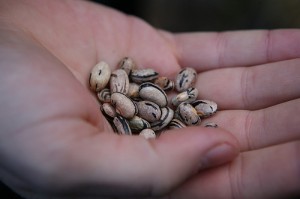 Many gardeners love sharing and exchanging seeds amongst fellow enthusiasts around the world. These gardeners often have an abundance of seeds in their gardens that they are willing to share with others. And by exchanging seeds, these gardeners can try something different, and grow some seeds that are difficult to find in their local areas. Many gardeners love sharing and exchanging seeds amongst fellow enthusiasts around the world. These gardeners often have an abundance of seeds in their gardens that they are willing to share with others. And by exchanging seeds, these gardeners can try something different, and grow some seeds that are difficult to find in their local areas.
Exchanging seeds often involves international shipments. Most countries have some import restrictions of seeds, and it is essential that the importers contact the plant health department of their countries to check what are allowed to be imported into their countries, Continue reading Seed Exchange & Import Regulations of Seeds
By Sandy, on March 21st, 2009
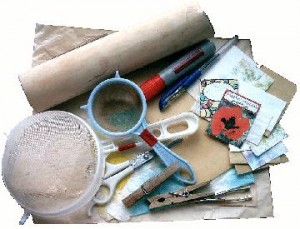 One person’s seeds are another person’s garden. In the gardening world, there are many communities of gardeners who are dedicated to sharing and exchanging seeds among fellow gardening enthusiasts around the world. One person’s seeds are another person’s garden. In the gardening world, there are many communities of gardeners who are dedicated to sharing and exchanging seeds among fellow gardening enthusiasts around the world.
I have never given much thought about the problems of shipping seeds internationally, but only until recently, when I have been asked to send a big bag of seeds (over 300 grams) to a friend in the USA. That’s the first time I started worrying about potential seizure by the US authorities.
And here is what I have found and would like to share.
Continue reading Shipping Seeds to US – Small Lots of Seed Permit
By Sandy, on March 19th, 2009
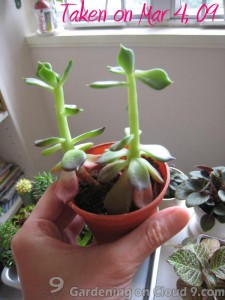
I bought these two Echeverias in December last year for my tabletop garden – Merry Christmas. In these three months, the stems of these Echeverias have kept stretching longer and longer, and now, they are like a Yao Ming of their genus.
Continue reading My Echeveria is Growing Way Too Tall!
By Sandy, on March 9th, 2009
Garden Container
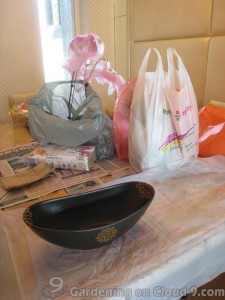 If you want to put more indoor plants in your tabletop garden, you need to use a bigger garden container with a wider opening. The size of my garden container is approximately 35 cm long, 15 cm wide (the widest part of the container), and 10 cm deep. And I would suggest you to use a garden container with some weight, so the container will not topple easily, but can keep its balance and stand stably when you are arranging the plants in the container. If you want to put more indoor plants in your tabletop garden, you need to use a bigger garden container with a wider opening. The size of my garden container is approximately 35 cm long, 15 cm wide (the widest part of the container), and 10 cm deep. And I would suggest you to use a garden container with some weight, so the container will not topple easily, but can keep its balance and stand stably when you are arranging the plants in the container.
Sizes of Indoor Plants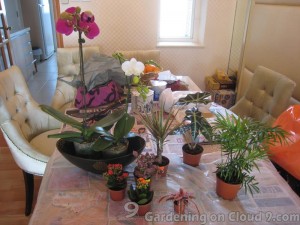
The number of indoor plants you get for your tabletop garden depends on the size of your garden container. Continue reading How to Choose Garden Container and Indoor Plants for Tabletop Garden – Bento Box?
By Sandy, on March 9th, 2009
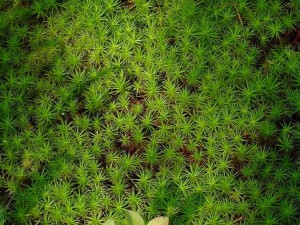 There mainly are 2 types of moss – sphagnum moss and sphagnum peat moss. While sphagnum moss is the living top layer of a sphagnum bog, sphagnum peat moss is dead residue beneath this live layer. Hence, before harvesting the sphagnum peat moss from the lower levels of the bog, the harvesters must first remove the top few inches of the live sphagnum There mainly are 2 types of moss – sphagnum moss and sphagnum peat moss. While sphagnum moss is the living top layer of a sphagnum bog, sphagnum peat moss is dead residue beneath this live layer. Hence, before harvesting the sphagnum peat moss from the lower levels of the bog, the harvesters must first remove the top few inches of the live sphagnum 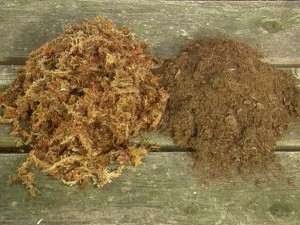 moss. moss.
Continue reading Sphagnum Moss & Sphagnum Peat Moss
|
|



 Here is a list of the most common houseplants that are suitable for indoor gardening. The houseplants in this list are mostly easy-to-grow, low maintenance, hardy plants that fit the busy lifestyle of us, the city gardeners.
Here is a list of the most common houseplants that are suitable for indoor gardening. The houseplants in this list are mostly easy-to-grow, low maintenance, hardy plants that fit the busy lifestyle of us, the city gardeners.








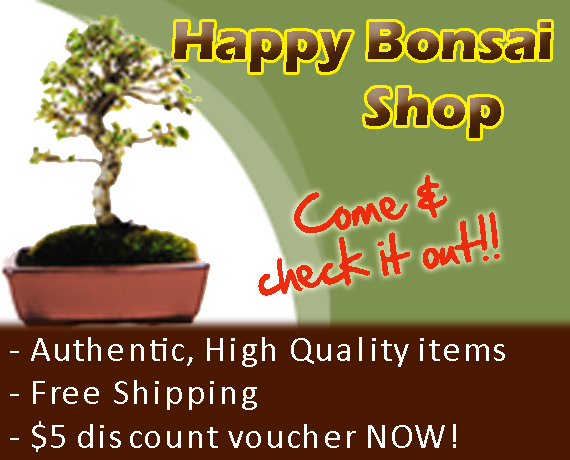

Recent Comments